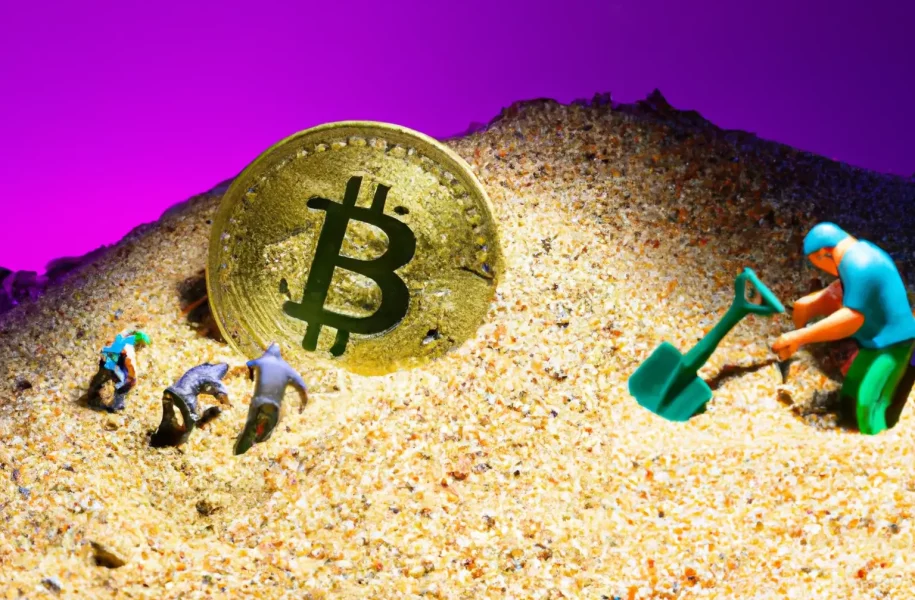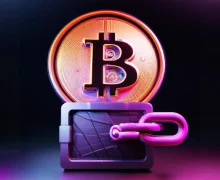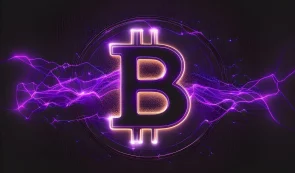Mining pools explained

As we all know, most cryptocurrencies are created through mining. Such is the case with Bitcoin – the world’s largest crypto token by market cap.
Miners use computing power to solve complex math problems. The first computer to find the solution to the problem receives the next block of bitcoins and the process begins again. The mining process is based on the consensus algorithm for Proof-of-Work (PoW). Not only does mining add new bitcoins to the network, but it also validates transactions on the blockchain.
In the beginning, every person with a basic computer and an internet connection could create BTC tokens.
The problem for modern-day miners is that creating bitcoins (finding a block) is becoming more and more difficult with the expansion of the blockchain. Now expensive and sophisticated hardware is required for a miner to be able to mine Bitcoin – this only applies to some cryptocurrencies that work on the same consensus mechanism.
After the network has gained some traction, people with the most basic setup can no longer produce BTC. Not everyone can afford to spend thousands, and even tens of thousands, for specific hardware that offers the required computing power. Not only that but mining rewards are programmed to be halved every four years or so, making it less profitable since the miner will need to allocate more significant computational resources over time and still earn less from the process.
The mining process requires application-specific integrated circuits (ASICs) to be deployed in large rigs to complete the complex nature of mathematical problems within the time needed to mine a block.
It has become almost impossible for a single piece of personal computing equipment to mine a block successfully.
To solve this problem, mining pools were created in order to lower the barrier for crypto mining and improve the chances of mining a block.
What is a mining pool, and how does it work?
A mining pool is a collaborative group of crypto miners who combine their computational resources over a network to strengthen the probability of finding a block or, in other words – successfully mining for cryptocurrency.
The pool operator manages all activities, such as recording the work performed by the members, manages their hashes, and assigns rewards to each member based on the computing power they have contributed.
A mining pool fee is deducted from the rewards distributed to each member, which is computed based on the pool-sharing mechanism. Depending on how these cryptocurrency mining pools share rewards, they can be of the proportional type, pay-per-share type, or completely decentralized peer-to-peer (P2P) pool type.
The most common method is proportional mining. Miners contribute to the pool’s processing power and receive shares until the point at which the pool finds a block. After that, rewards are distributed proportionally depending on each miner’s share in the pool.
Working in a similar way, pay-per-share pools allow each miner to receive shares for their contribution. Unlike the proportional mining method, these pools provide instant payouts regardless of when the block is found. A miner contributing to this pool can exchange shares for a proportional payout at any time.
The third method aims to prevent centralization in the pool. Peer-to-peer mining pools integrate a separate blockchain related to the pool itself and are designed to prevent the pool operators from cheating and the pool itself from failing due to a single central issue.
Shares in a mining pool
Mining pool operations center around the concept of shares, or in other words potential block solutions. For example, suppose a block solution is a number that ends with ten zeros, and a share may be a number with five zeros at the end. Sooner or later, one of the shares will have not only 5 but 10 zeros at the end, which will be the block solution. It may be a block solution, but it is not necessarily so.
Shares are needed in order for mining pools to estimate the miner’s contribution to the workload.
Transaction fees
Usually, fees are paid to the miner (mining pool) for validating a transaction. Different mining pools could share these fees between their miners or not. The fairest methods where the payouts from the pool include not only the block subsidy but also the transaction fees are Pay-per-last-N-shares (PPLNS), Pay-Per-Share Plus (PPS+) or Full Pay-Per-Share (FPPS).
Multipool mining
The process of multipool mining describes when a pool switches between different altcoins to see which is the most profitable. To avoid the need for many different wallets for all possible minable coins, multipools may automatically exchange the mined coin for a coin like Bitcoin. By using multipools, you can receive more coins in the intended currency than by doing the process alone. This method also increases demand for the intended coin, which has the side effect of increasing or stabilizing the value of the intended coin.
Best mining pools
- Foundry USA: Foundry USA is a Bitcoin mining pool owned by Foundry, a subsidiary of Digital Currency Group (DCG). Foundry specializes in providing machines, capital, institutional expertise, and intelligence to North American bitcoin miners. They also offer financing for mining equipment and a marketplace for buying and selling mining equipment called FoundryX, one of the key factors that led Foundry USA to become one of the top pools in the cryptocurrency space.
- ANTPool: Antpool is owned by Bitmain Technology LTD, a leading crypto mining hardware company based in China. The mining pool offers an app that monitors the hash rate of users’ miners in real-time, and supports multi-coin mining and shared account management for convenience.
- F2Pool: F2Pool is one of the top mining pools to this day. The company was founded in 2013 and is hence one of the earliest pools for mining Bitcoin and other cryptocurrencies. The pool consists of over 1,000,000 mining machines from across the globe. It can be used for mining multiple cryptocurrencies on multiple blockchains, also known as merged mining. You can also receive free coins from mining Bitcoin with the pool.
- Binance Pool: Binance Pool is a comprehensive service platform dedicated to improving miners’ income. Binance Pool provides mining services to users focusing on PoW and PoS. As an essential part of the Binance ecosystem, Binance Pool makes full use of its advantages in technology, capital, the exchange business, industry resources, and other areas in order to offer its users not only the ultimate mining experience but also a one-stop hub for “mining-trading” services. Binance Pool has already deployed mining pool nodes in America, Europe, Southern China, Northern China, and other locations and continues to expand.
- ViaBTC: Via BTC is one of the world’s top 5 largest mining pools that allows people to mine Litecoin, Bitcoin Cash, and over ten other cryptos. Its mining farms cost differently depending on weather, although there also are constant yearly price options.
Conclusion
As we mentioned, mining cryptocurrency is becoming more and more difficult, and “solo miners” are experiencing a hard time staying afloat. Mining pools provide an excellent opportunity for crypto enthusiasts to start mining without the worry that their hardware won’t be enough because you get rewards for whatever you can provide.




